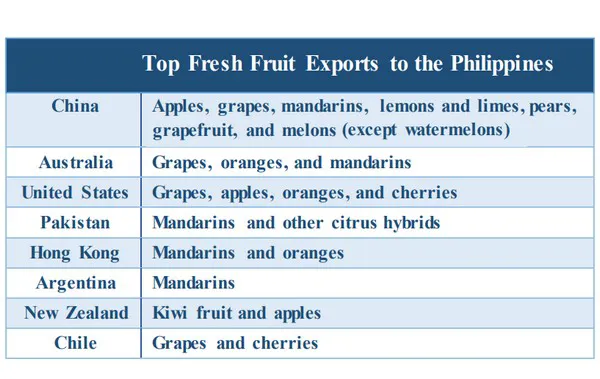Since the start of COVID-19, Philippine consumers have incorporated more fresh fruit into their diet. Global exports of fresh fruits to the Philippines increased 36 percent to $695 million in 2020 and are forecast to grow five percent in 2021. U.S. exports, however, dropped 35 percent in 2020 to $32.5 million, due to ocean freight challenges which continue to persist. Traders are optimistic that once the pressure on the global supply chain eases, U.S. fresh fruit exports to the Philippines will bounce back to $50 million in annual sales. The Philippines grows a variety of tropical fruits and U.S. exporters are encouraged to look at counter-seasonal opportunities and fruits that are not widely grown in the Asia Pacific region.
Global exports of fresh fruits to the Philippines increased 36 percent to $695 million in 2020 compared to 2019, and are forecast to grow further by five percent in 2021.

The top exporting countries in 2020 were China, Australia, and the United States. Exports from mainland China and Australia increased 80 and 17 percent respectively, while U.S. exports dropped 35 percent in 2020.
The decline in U.S. exports was across the top three fresh fruits, namely grapes, apples, and oranges amidst ocean freight challenges, while exports of cherries that are air-flown grew 33 percent. Below is a list of the top fresh fruits exported to the Philippines in 2020 and the countries of origin.
Click here to read the full report.
Source: apps.fas.usda.gov
